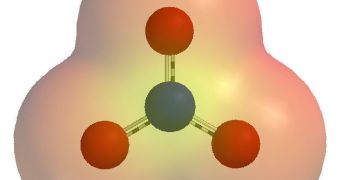A group of investigators in the United States has recently demonstrated that molecules in dilute aqueous solutions tend to exhibit a high level of self-recognition. This is an amazing finding, as it hints at a type and level of intelligence previously thought reserved exclusively for biological molecules.
Experts at the Lehigh University in Pennsylvania have over the past few years focused their research on large and soluble ions called macroions. Recently, a study of how two clusters of such macroions interacted with each other revealed the amazing phenomenon.
What scientists saw in the liquid was a clear tendency for the macroions to identify each other, and self-assemble into distinct structures. Interestingly, these interactions did not result in the formation of mixed species of molecules.
The phenomenon was only observed in mixed dilute aqueous solutions, the team reveals. For this research, the scientists monitored the inner structure of each macroion cluster closely.
One of the reasons why the Lehigh University team focused its attention on macroions is that these molecules have an entirely different set of behaviors from small ions, including sodium chloride, or the common rock salt.
Ions are atoms in which the total number of electrons available is not equal to the total number of protons in the atomic nucleus. This gives the entire atom an electrical charge, which can be either positive or negative, Daily Galaxy reports.
The most important difference between small ions and macroions is that the latter tend to be very heavily attracted to each other when placed in a solution. They come together to form blackberry structures, which are basically small, single-layered hollow spheres.
These formations are tremendously stable and uniform, and they cannot be produced from the interaction of small ions. Moreover, the process of forming these blackberry structures is very similar to the chain of events that leads to the formation of shells in capsid viruses.
In other words, the macroion self-assembly process can literally mimic advanced biological processes, the team argues, and this is what makes them so interesting for science. In the new study, scientists analyzed two types of 2.5-nanometer spherical macroions called {Mo72Fe30} and {Mo72Cr30}.
When put together in a solution, they formed two separate types of blackberry structures, rather than a single one, made of atoms from both clusters. Charge density differences and surface water mobility differences may underlie this behavior, the group concludes.

 14 DAY TRIAL //
14 DAY TRIAL //